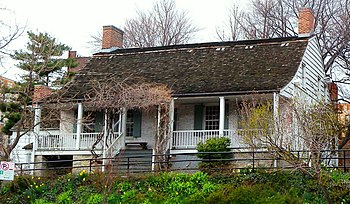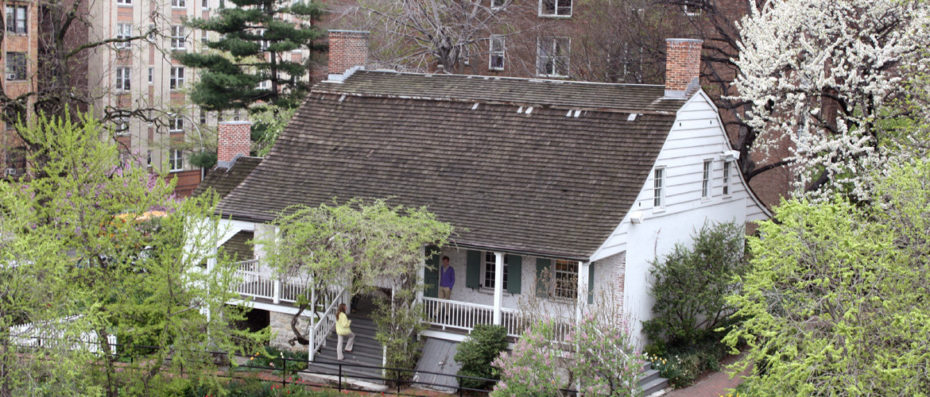American History
Related: About this forumNY: Exhibit At 18th C. Dutch Historic House Faces Racist Past, Dyckman Farmhouse Museum & Slavery
'It can be uncomfortable': how a New York farmhouse is facing its racist past. In a new exhibit, 3 artists reckon with the history of slavery at the Dyckman Farmhouse Museum with a range of challenging pieces. The Guardian, Dec. 2, 2020.
When people think of buildings in Manhattan, chances are they think big and brash, cloud-piercing skyscrapers for tourists to marvel at. But the borough is also home to the far more modest Dyckman Farmhouse, a white clapboard home built in 1765. It’s the oldest farmhouse in the city, and just off 204th Street in Inwood, once home to the Dutch farmer William Dyckman, his family and their slaves. It’s now known as the Dyckman Farmhouse Museum and this fall until next, it’s honoring an overlooked history in an exhibition called 'Unspoken Voices: Honoring the Legacy of Black America.' It features the artworks of three local artists, all women, who respond to the legacy of the farm and its past with slavery. It’s a way to tell untold stories, says Meredith Horsford, the museum’s executive director.
“Even though we are a historic site, we relate the history to our present day, and that connection is imperative to talk about race,” said Horsford. “It can be uncomfortable, but it still needs to happen.”

(2011)
Slavery, says Horsford, is a topic that museum visitors are curious about, but cautious. “They think, oh we’re in the north, that wasn’t an issue here,” she says. “From my perspective, working with artists around this is a conversation starter, it’s a topic that is usually difficult to talk about.” The exhibition, partially funded through the Upper Manhattan Empowerment Zone, all started when Horsford put out a call for artists. Each artist then decided to take a different approach to the theme of slavery, peeling back the layers of history. “People who have been enslaved have been portrayed just as that, but they don’t say much more,” she said.
On the Dyckman Farmhouse, there were roughly seven enslaved people living at the house, shortly after it was built. Records show that Francis Cudjoe was an enslaved man who would later be freed in 1809, and others known only by their first names; Will, Gilbert, Harey and Blossum. A free black woman named Hannah, who was a freed descendant of slaves, worked as a cook for the household. There was also a burial ground for slaves nearby, known as the Inwood Slave Burial Ground, which contained over 30 slave families (today, it’s a parking lot for a school on 212th Street).
“We wanted to give voice to people and make sure it came across that we’re talking about multi-faceted individuals, people who have their own lives and families when they were put into these horrible situations,” adds Horsford. “We never want to say: ‘these people were just slaves,’ because there’s so much to the story than just that.” In the exhibition, artist Gwendolyn Black has created life-size figures, which represent some of the farm’s former inhabitants. One represents Hannah, the cook, who stands in the family kitchen as a way to celebrate the legacy and roots of African American cuisine...
More,
https://www.theguardian.com/artanddesign/2020/dec/02/dyckman-farmhouse-museum-new-york-slavery-art-exhibition
https://dyckmanfarmhouse.org/

- Photo from 1934. https://en.wikipedia.org/wiki/Dyckman_House

- 'Manhattan's Last Farmhouse.'
Urban food gardening.